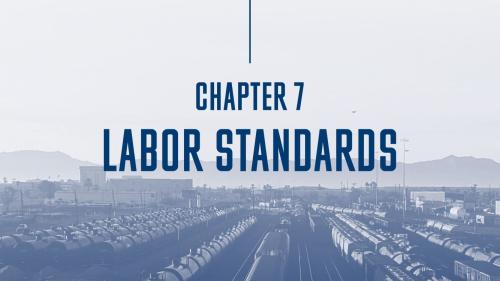Gloomy news in last month’s jobs report was partially erased by better news in this month’s report. Employers reported payroll gains of 165,000 in April, a considerable improvement compared with the initial estimate that payrolls grew just 88,000 in March. That initial estimate of March job gains turns out to have been too low and was revised in this month’s report. The BLS now estimates that March payroll gains were 138,000—not a terrific number, but 50,000 better than the initial estimate.
The April jobs report also contains a major revision to earlier estimates of job growth in February. The BLS initially estimated that February’s job gains were 246,000, certainly a welcome piece of news. In its March report it revised February’s job gains up to 268,000. And in its latest report, February job gains are now estimated to have totaled 342,000, the fastest rate of job gain we have seen in three years.
Taking the revisions into account, the BLS now estimates that payroll gains have averaged 208,000 a month for the past 6 months. Employment growth was even faster in the private sector, averaging 216,000 a month. Unfortunately, improving conditions in the private sector have been partly offset by weakness in government payrolls. These fell another 11,000 in April.
Government payrolls have shrunk 532,000 since the end of the last economic expansion. In percentage terms, the fall in government payrolls has been larger than the decline in private payrolls over the same period (-2.4% in the government versus -1.8% in the private sector). It is an astonishing development. Public sector employment is typically thought to be more stable than private sector employment. Although government employment was indeed much better protected during the worst months of the downturn, it has turned out to be a persistent source of weakness throughout the recovery. Since December 2009 private-sector payrolls have grown more than 6.7 million. Government payrolls have shrunk 636,000.
The gloomy news in the March employment report was not entirely erased by today’s numbers. Unemployment remains exceptionally high for this stage of an economic recovery, and long-term unemployment remains at historically high levels. Nonetheless, the unemployment rate edged down 0.1 point, to 7.5%, in April, and it has fallen 0.3 points since the end of last year. The unemployment rate has now hit its lowest level since December 2008.
The improvement in the unemployment rate in April was not the result of a shrinking labor force. It occurred because estimated employment levels rose. Respondents to the BLS household survey reported employment gains of 293,000. This number is less encouraging than it sounds, because in March respondents to the same survey reported employment losses of 206,000. Since January, employment gains in the household survey have only averaged about 86,000 a month, a rate of job gain that seems too slow to cause they unemployment rate to fall. For the unemployment rate to fall with such meager job gains the participation rate must fall. Indeed, the adult participation rate has fallen 0.3 points since January, though it held steady in April. The household survey gave us good news on job growth and a dip in unemployment in April, but the longer term picture remains discouraging. The job market continues to improve painfully slowly from its worst downturn since the Depression.



Commentary
Some Good News on April Job Growth
May 3, 2013